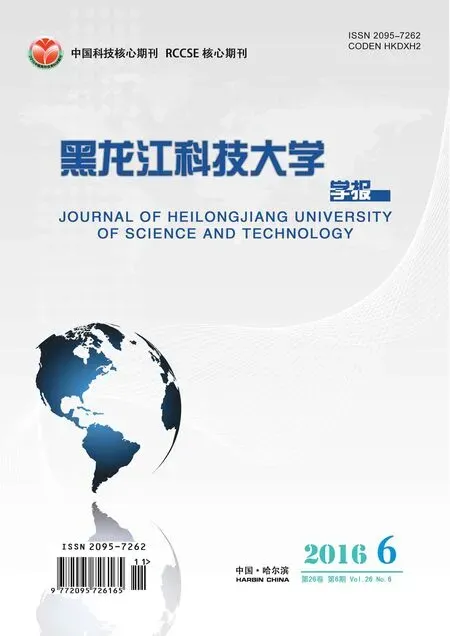Selection of extracting additives for purification of zinc melts from metal impurities
., .
(Vladimir State University named after Alexander & Nikolay Stoletovs, Vladimir 600000, Russia)
Selection of extracting additives for purification of zinc melts from metal impurities
VladimirA.Kechin,EvgenyS.Prusov
(Vladimir State University named after Alexander & Nikolay Stoletovs, Vladimir 600000, Russia)
This paper proposes the methodology of the selection of extracting additives for purification of zinc melts from metal impurities(for example from iron) by the liquation refining method, introduces the calculations of the effectiveness of zinc melts liquation refining with an assessment of possibility using a formula of extracting periodic process for one stage of extraction, and underscores the investigation into the extracting ability of the chosen additives for purification of zinc melts from iron impurity. The experimental results show that the highest efficiency of the purification of unalloyed zinc from iron impurity was achieved by using silicon as an extraction additive. It was recommended to use aluminum and manganese as extracting additives for zinc alloys refining.
zinc melts; purification; extracting additives; metal impurities
0 Introduction
Zinc is widely used in various industries for casting, wrought and composite alloys production for structural and functional purposes, including tribological, sacrificial, high-damping, biocompatible and other materials[1-4].
Modern requirements for purifying primary zinc used for alloys production are very high. The main impurities in zinc produced by electrolysis are iron, lead, cadmium, copper, tin and arsenic[5]. Concentrations of these impurities determine the grade of primary zinc per ASTM B6-13 or other standards. The problem of producing zinc with lowered content of iron is especially actual. Due to the low solid solubility in zinc (0.001%) iron impurity forms the brittle intermetallic compounds(FeZn, FeZn3, etc.), which significantly reduce corrosion, mechanical and casting properties of zinc and its alloys[5-8].
Modern physical and physicochemical methods of refining zinc melts from metallic impurities (Fe, Pb, Cu, etc.) are unproductive and difficult from the point of view of constructive-technological realization[9-18]. The method of liquation refining represents the greatest interest in the production of zinc melts with low content of iron and other metallic impurities and is easily adapted to the conditions of operating industrial enterprises. This method is based on the use of refining additives of various metals, which forms refractory phases in interaction with the impurities[19]. These phases segregate due to the difference of density the newly formed phases and zinc melt. Then, the subsequent separation of these phases can be carried out by standing, centrifugation or filtration of the zinc melts.
The aim of the present work is to evaluate the effectiveness of liquation refining of zinc melts from impurity elements(for example from iron)by means of additive elements.
1 Theoretical considerations
1.1 Selection of refining additives for purification of zinc melts from iron impurity
Selection of additive elements for producing metal melts with a low content of impurity elements using the liquation refining method is based on an assessment of the nature of the periodic system elements’ interaction with impurity elements and with the basic metal. The possibility of application of various elements as an extractive addition for purifying zinc melts is caused by its solubility in zinc and efficiency of the additive element. Analysis of metal-chemical properties of the elements in their interactions with zinc melts and iron impurity show that they formed various types of bondings[5, 20]. Selection of the elements as potential refining additives is carried out, considering the nature of their interactions with zinc and iron, and the cost and the toxicity. After screening on these attributes from all elements of periodic system, potential additive elements were located, and characteristics of their interactions with zinc and iron have been presented in Table 1.
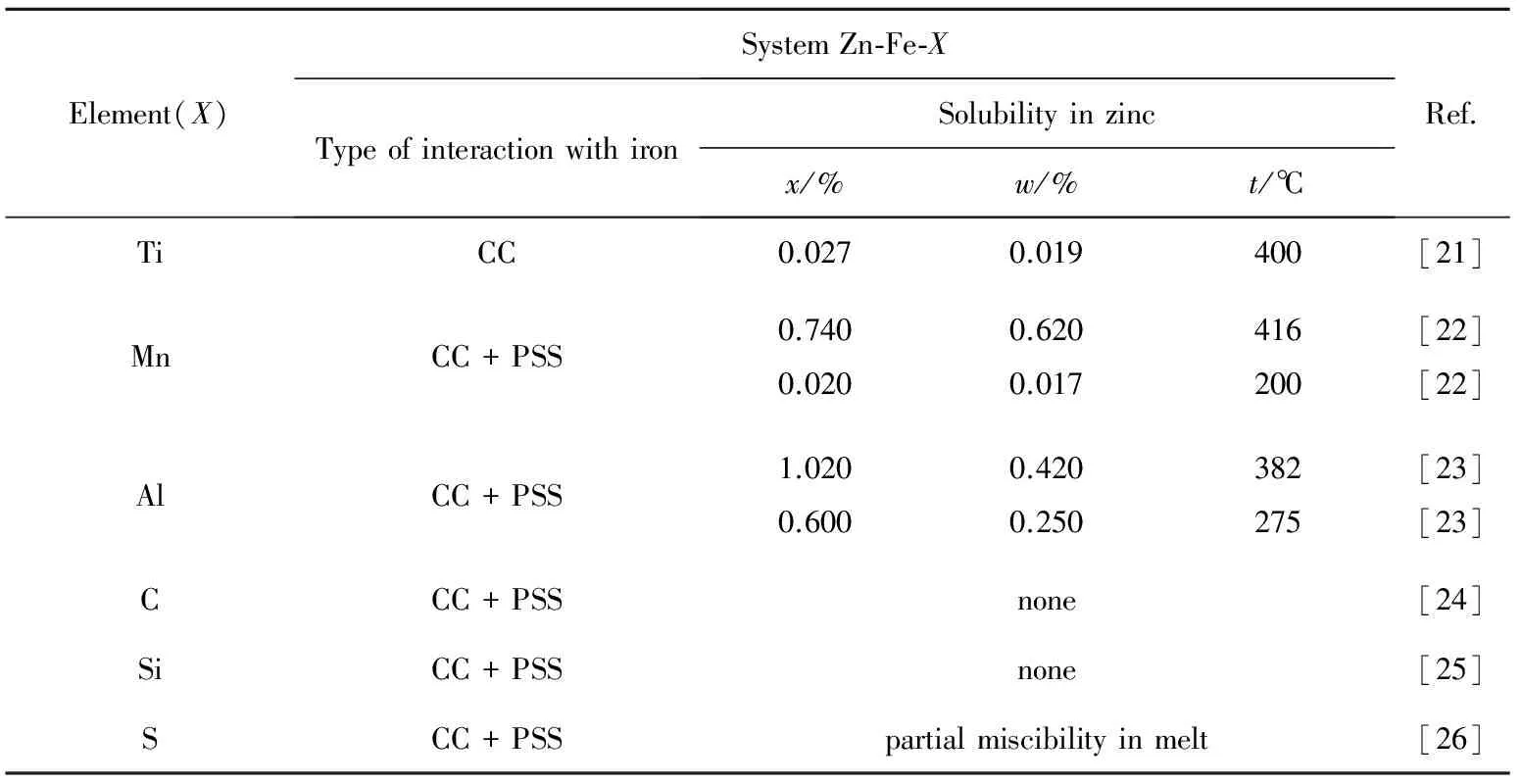
Table 1 Characteristics of additive elements interactions with zinc and iron impurity
Note:PSS—partial solid solution; CC—chemical compound.
Table 1 shows the possibility of using elements C, Si, S(Group A) as refining additives for unalloyed zinc purification from iron impurity. These elements practically do not interact with zinc and they exhibit low solubility, but they were formed chemical compounds and solid solutions with iron. Elements Al, Mn, Ti(Group B) performing the role of alloying elements and refining additives may be used for the production of zinc alloys.
Table 2 shows the characteristics of the formed phases in the zinc-iron-additive system for choosing the potential extraction additives in zinc melts by the liquation refining[20, 27].
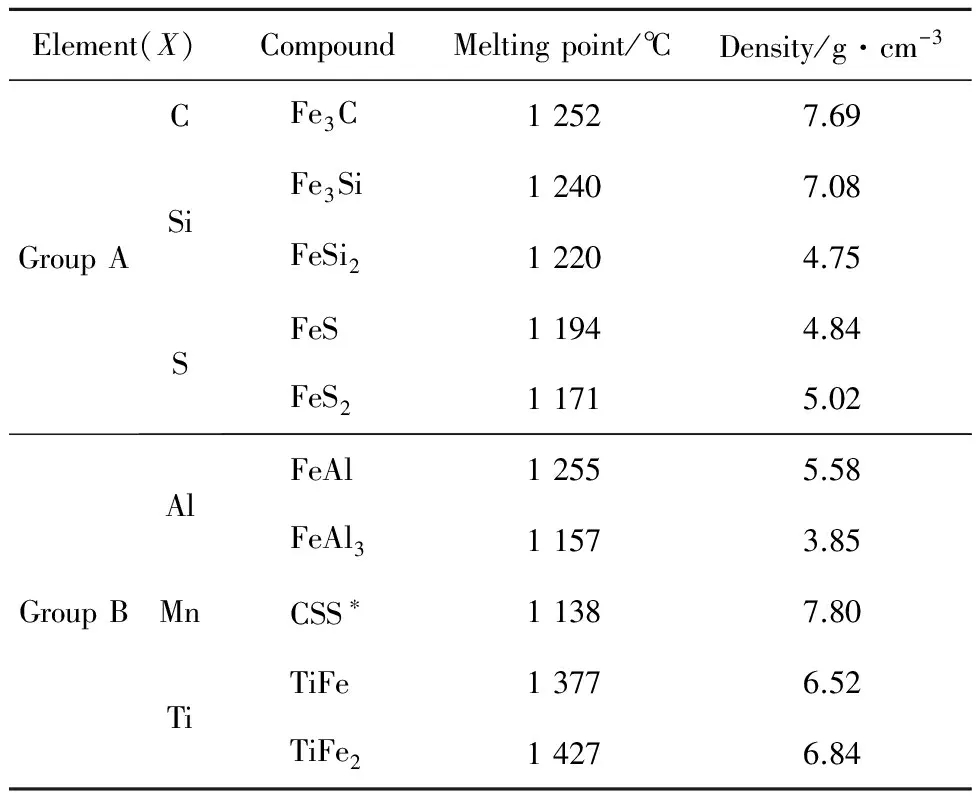
Table 2 Characteristics of main phases in the Zn-Fe-X system
Note:CSS*—complete solid solution.
As can be seen from Table 2, the additive elementsin the Group A have low solubility in zinc, and the elements in Group B can be dissolved in zinc, forming iron chemical compounds with high-melting (above 1 000 ℃).
1.2 Theoretical evaluation of the effectiveness of liquation refining zinc from iron impurity
Generally, the extraction theory[28]has been used to evaluate the effectiveness of zinc purification from metallic impurities by means of additive elements. In trems of the technological processes of zinc melts purification from iron, the formula of periodic process for one stage of extraction has been used to calculate the metallurgical extracting processes by analogy[29]:
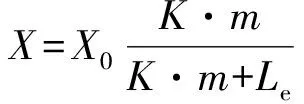
(1)
whereX0—initial concentration of impurity in the metal(zinc), %(mass fraction, similarly hereinafter);
X—concentration of impurity after the extraction operation, %;
K—equilibrium coefficient of distribution of impurity between phases of the segregating system;
m—mass of solvent(zinc), g;
Le—mass of extracting additive, g.

It has been assumed that the system reaches the equilibrium state between liquid and solid phases; however, in real conditions of crystallization and phase separation, the equilibrium is not reached, and experimental value of impurity content after refining must be larger than its calculated value.
For Zn-Fe-X(whereX= C, Si, S, Al, Mn, Ti) system, calculations of the extraction efficiency of iron impurity from zinc melt have been made. The following input data have been accepted in the calculations: initial concentration of ironX0= 0.015% Fe, base metal massmZn= 100 g, temperature of impurity extraction 500 ℃. Consumption of the extracting additive element has been accepted 10-fold in relation to impurity element concentration(L1= 0.15%). Results of the calculations are presented in Table 3.
Efficiency of zinc purificationη(%) from iron impurity has been determined by the following equation:

(2)
whereFe0andFe1—initial and final concentrations of iron impurity in zinc melts,respectively.
Table 3 shows that at 10-fold consumption of extracting additive and initial content of iron in zinc of 0.015% additive elements are located in the following series, decreasing their extracting ability:

Si→S→C→Ti→Al(Mn).
Estimation of zinc purification efficiency from iron at accepted 10-fold consumption of the extracting additive shows that the elements of Group A provide removing of iron from melt atη= 81.2%-83.3%. Under existing conditions only titanium promotes refining atη= 78.3% from elements of Group B.
Fig.1 shows the results of calculations of iron content change in zinc melt for various consumption of additive elements in relation to iron content in zinc. It can be seen that if C, Si, S, Ti decrease in the iron content from 0.015% to 0.002%-0.004% at their 10-fold excess, 50-fold excess of aluminum is necessary in order to achieve the similar purification effect at 30-fold excess of manganese. Obviously, the use of aluminum and manganese will be possible for the production of zinc alloys with low content of iron, only in case of their presence in the alloy composition as basic alloying elements.

Fig. 1 Change of iron content in zinc melt depending on the consumption of extracting additive (L1)
Fig.2 shows that purification efficiency grows up to 85%-90% with the increase of iron content in initial zinc(0.003%-0.030%) excluding aluminum and manganese, if used, purification in such conditions practically does not take place. It can also be seen, that liquation refining method is not suitable for using technologies of deep purification of unalloyed zinc with initial iron content up to 0.003%. Fig.3 shows a diagram for extracting additive consumption determining at production of zinc melts with iron content to 0.003% from zinc having various purity.
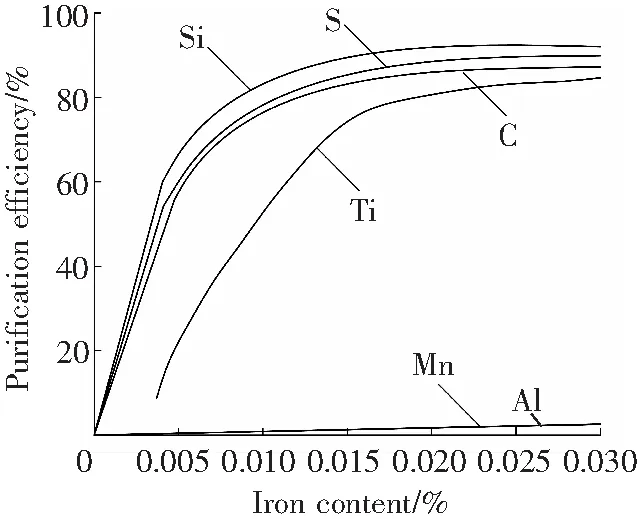
Fig. 2 Efficiency of zinc purification with different iron content at 10-fold excess of extracting additive
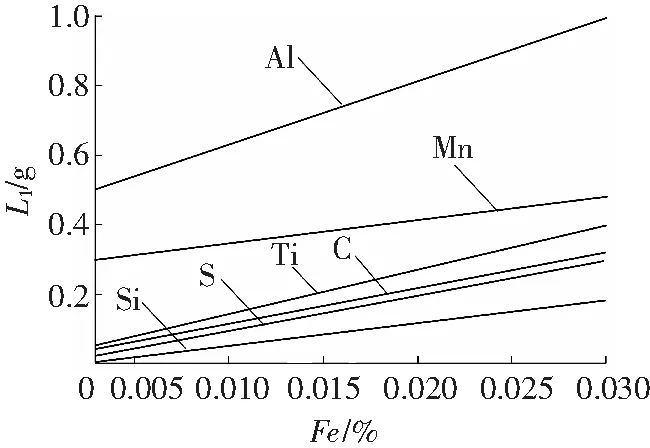
Fig. 3 Extracting additive consumption (L1) for zinc purification with different iron content
2 Experimental verification
2.1 Materials and methods
Experimental investigations on zinc purification from iron using selected refining additives showed the possibility of iron impurity content decreased in zinc by liquation refining. Melting of zinc of high grade (99.95% Zn) was performed in alundum crucible in an electric resistance furnace. The iron content in zinc melt before refining was 0.014%-0.016%. Carbonyl iron was introduced in zinc at 500 ℃, refining additives Al and S were introduced in melt at 490 ℃, and Ti, Si, Mn and C-at 600 ℃. Purities of all used materials were more than 99.5%. When introducing the additives melt was mixed with graphite rod within 8-10 min. After introducing the additives melt was cooled with a speed of 40-60 ℃/h down to the temperature of zinc crystallization (~420 ℃). Then metal was quickly heated to 480 ℃ and a sample from the middle part of crucible was withdrawn for chemical analysis by means of quartz tube. Chemical composition of samples was carried out byX-ray fluorescence spectrometer ARL Advant’X(Thermo Scientific, USA). Refining additives were entered into the melt to iron impurity in various ratios in the amount from 0.1% to 1.3%.
2.2 Experimental results of zinc melt purification from iron using additive elements
Results of experimental investigations of zinc purification from iron impurity using additive elements (Fig.4) show the different refining capacity of the additives.
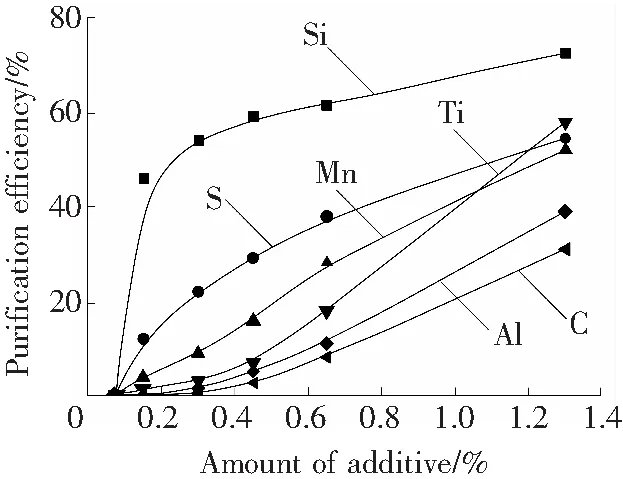
Fig. 4 Experimental data on efficiency of zinc purification from iron by extracting additives
Some discrepancy between the calculated and the experimental data on the efficiency of zinc purification from iron impurity can be explained by some assumptions accepted in calculations (complete interaction of extracting additives with iron impurity, using data of the od equilibrium phase diagrams for selected phases of only one stoichiometric composition, complete removing of reaction products from the melt, etc.), as well as possible losses of extractive additives and their incomplete recovery when introducing into the melt. Fig.4 indicated that only silicon colud be considered as an effective extracting additive in relation to iron in the production of unalloyed zinc. As expected, when aluminum and magnesium were added into zinc melt, they were partially dissolved in zinc and remained in it after purification. At a large consumption of additives their content in zinc reached high values determined by the phase diagrams and nature of interaction with zinc. Obviously, the process of purification of unalloyed zinc from iron using the considered additives will be difficult under the conditions of large-scale production due to the high consumption of additive elements. At the same time, the use of aluminum and magnesium as both alloying and extracting additive elements in the production of zinc alloys allowed to neutralize negative effect of iron owing to the formation of complex products. So, in this case operation of refining was combined with simultaneous alloying of base metal with aluminum or manganese.
Thus, it has been recommended to use silicon as an extracting additive for the production of unalloyed zinc with lowered iron content and to use aluminum and manganese for the production of zinc alloys.
3 Conclusions
The principle of the selection of additive elements for zinc melts purification from iron impurity by using the method of liquation refining has been theoretically investigated. The possibility of using a formula of periodic process of extracting for one stage of extraction and evaluating the effectiveness of liquation refining of zinc melts from iron had been studied. The extracting ability of the chosen additives in zinc melts purification from iron impurity has been established. It had been recommended to use silicon as an extracting additive for refining of unalloyed zinc from iron and to use aluminum and manganese for zinc alloys.
Acknowledgments:
This research has been carried out in the framework of the state task of the Ministry of Education and Science of the Russian Federation(Project No.3022).
[1] BIRCH J. New alloys for zinc casting[J]. Mat Des, 1990, 11(2): 83-87.
[2] BABIC M, NINKOVIC R. Zn-Al alloys as tribomaterials[J]. Tribol Ind, 2004, 26(1/2): 3-7.
[3] PRUSOV E S, KOROBKOV M B, KECHIN V A. Current state and perspectives of increasing of tribotechnical characteristics of zinc alloys[J]. Mach Techn Mat, 2014(2): 9-11.
[4] CHUNG D D L. Materials for vibration damping[J]. J Mat Sci, 2001, 36: 5733-5737.
[5] KECHIN V A, LUBLINSKI E Y. Zinc alloys (in Russian)[M]. Moscow: Metallurgiya, 1986.
[6] SOLOZHENKO V L, KECHIN V A. Improving the electrochemical properties of zinc with an elevated content of iron[J]. Prot Met, 2001, 37(3): 286-289.
[7] PORTER F C. Corrosion resistance of zinc and zinc alloys[M]. New York: Marcel Dekker Inc, 1994.
[8] ZHANG X G. Corrosion and electrochemistry of zinc[M]. New York: Plenum Press, 1996.
[9] BRATT G C. Impurity effect in the electrowinning of zinc and cadmium[J]. Electrochem Tech, 1964, 2: 323-326.
[10] ADHIA J D. Effect and control of impurities in electrolytic zinc production[C]// Proceedings of Symposium on Non-ferrous Metals Technology: III. NML: Jamshedpur, 1969: 1-10.
[11] FOSNACHT D, O’KEEFE T J. The effects of certain impurities and their interactions on zinc electrowinning[J]. Met Mat Trans B, 1983, 14(4): 645-655.
[12] MACKINNON D J, BRANNEN J M, FENN P L. Characterization of impurity effects in zinc electrowinning from industrial acid sulphate electrolyte[J]. J App Electrochem, 1987, 17(6): 1129-1143.[13] AULT A R, FRAZER E J. Effects of certain impurities on zinc electrowinning in high-purity synthetic solutions[J]. J App Electrochem, 1988, 18: 583-589.
[14] MURESAN L, MAURIN G, ONICIU L, et al. Influence of metallic impurities on zinc electrowinning from sulphate electrolyte[J]. Hydromet, 1996, 43(1/3): 345-354.
[15] CHEN X F. The effects of impurities on the current efficiency in zinc electrowinning(in Chinese)[J]. Hunan Nonferrous Met, 2006, 22(2): 24-26.
[16] QIU Y, ZHANG C, ZHAO Y. Effect of impurities on zinc electrowinning process in alkaline solution[J]. Nonferrous Met, 2009, 60: 76-79.
[17] YU X H, XIE G, LI R X, et al. Behavior of arsenic in zinc electrowinning[J]. Trans Nonferrous Met Soc China, 2010, 20: 50-54.[18] WANG L Y, GUI W H, TEO K L, et al. Optimal control problems arising in the zinc sulphate electrolyte purification process[J]. J Global Optim, 2012, 54(2): 307-323.
[19] SHAN’GIN E A. Development of the crystallization method for removing lead impurity from secondary zinc[J]. Russ J Nonfer Met, 2013, 54(1): 51-55.
[20] KUBASCHEWSKI O. Iron-binary phase diagrams[M]. Berlin: Springer-Verlag, 1982.
[21] MURRAY J L. The Ti-Zn (titanium-zinc) system[J]. Bul Alloys Phase Diag, 1984, 5(1): 52-56.
[22] OKAMOTO H, TANNER L E. The Mn-Zn(manganese-zinc) system[J]. Bul Alloys Phase Diag, 1990, 11(4): 377-384.
[23] CRANE L W. Melting and solidification of zinc-aluminium alloys[M]. Birmingham: Aston University, 1997.
[24] FRANKE P, NEUSCHUTZ D. C-Zn (carbon-zinc) [M]// Thermodynamic Properties of Inorganic Materials. Part 5: Binary Systems. [S.l.]: Springer Berlin Heidelberg, 2007.[25] OLESINSKI R W, ABBASCHIAN G J. The Si-Zn(silicon-zinc) system[J]. Bul Alloys Phase Diag, 1985, 6(6): 545-548.
[26] SHARMA K C, CHANG Y A. The S-Zn(sulfur-zinc) system[J]. Journal of Phase Equilibria, 1996, 17(3): 261-266.
[27] PERRY D L. Handbook of inorganic compounds[M]. Boca Raton: Florida, 2011.
[28] VIGNES A. Extractive metallurgy 2: metallurgical reaction processes[M]. [S.l.]: ISTE Ltd and John Wiley & Sons, 2011.[29] POGORELIY A D. Theory of metallurgical processes (in Russian)[M]. Moscow: Metallurgy, 1971.
(编辑 张迎春 校对 荀海鑫)
2016-07-14
The state task of the Ministry of Education and Science of the Russian Federation (Project No.3022)
Vladimir A.Kechin(1942-),Male,USSR,Krasnoyarsk,Professor,D.Sc.(Doctor of Technical Sciences),Research field:Metallurgy and Materials Science,E-mail:keclin@vlsu.ru.
TF813
2095-7262(2016)06-0653-06
:A
金属杂质中纯化锌熔体的提取剂选择方法
VladimirA.Kechin,EvgenyS.Prusov
(弗拉基米尔州立大学, 弗拉基米尔600000, 俄罗斯)
提出了一种通过熔析精炼方法从金属杂质(例如铁)中纯化锌熔体的提取剂选择方法。采用一个提取阶段的周期性过程公式计算锌熔体精炼的有效性,并研究所选添加剂从铁杂质中提纯锌熔体的提取能力。实验结果表明,从铁杂质中纯化非合金锌,可以采用硅作为提取剂,且提取效率最高;精炼锌合金可以采用铝和锰作为提取剂。
熔融锌; 提纯; 提取剂; 金属杂质
10.3969/j.issn.2095-7262.2016.06.014

